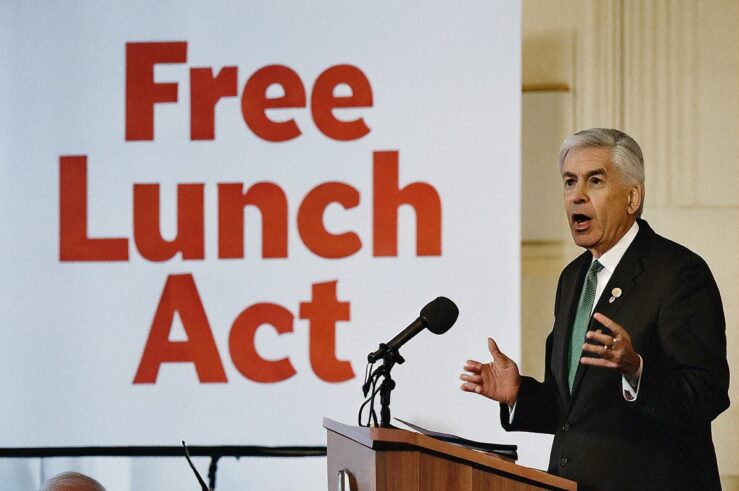[Cross posted at The Center for the Protection of Intellectual Property]
In a prior blog posting, I reported how reports of a so-called “patent litigation explosion” today are just wrong. As I detailed in another blog posting, the percentage of patent lawsuits today are not only consistent with historical patent litigation rates in the nineteenth century, there is actually less litigation today than during some decades in the early nineteenth century. Between 1840 and 1849, for instance, patent litigation rates were 3.6% — more than twice the patent litigation rate today.
(As an aside, we have to hold constant for issued patents in computing litigation percentage rates because more patents are issued now per year than twice the total population of New York City (NYC) in 1820 — 253,315 patents issued in 2012 compared to 123,706 residents in NYC in 1820. Yet before someone says that this just means we have too many patents today, as Judge Posner blithely asserts without any empirical evidence, one must also recognize that the NYC population in 2013 is 8.3 million, which is far beyond merely double its 1820 population — NYC’s population has grown by a factor of 67! A simple comparison to population growth, especially taking into account the explosive growth in the innovation industries in the past several decades, could as easily justify the claim that we haven’t got enough patents issuing today.)
Unfortunately, the mythical claims about a “patent litigation explosion” have shifted in recent months (perhaps because the original assertion was untenable). Now the assertion is that there has been an “explosion” in lawsuits brought by patent licensing companies. I’ll note for the record here that patent licensing companies are often referred to today by the undefined and nonobjective rhetorical epithet of “patent troll.” In a recent study of patent licensing companies that exposes many of the unsound and unproven claims about these much-maligned companies – such as that patents owned by these companies are of lower quality than those owned by manufacturing entities – Stephen Moore first explained that the “troll” slur is used today by academics, commentators and the public alike “without a universally accepted definition.” So, let’s dispense with nonobjective rhetoric and simply identify these companies factually by their business models: patent licensing.
As with all discriminatory slurs, it’s unsurprising that this new claim about an alleged “explosion” in so-called “patent troll” lawsuits is unproven rubbish. Similar to the myth about patent litigation generally, this is just another example of overwrought and empirically unsound rhetoric being used to push a policy agenda in Congress and regulatory agencies. (Six bills have been on the Hill so far this year, and FTC Chairwoman Edith Ramirez has announced that the FTC intends to begin a formal § 6(b) investigation of patent licensing companies).
How do we know that patent licensing companies are not the sole driver of any increases in patent litigation? Contrary to the much-hyped claim today that patent licensing companies are the primary cause of most patent lawsuits in district courts in 2012, other serious and more careful reviews of the litigation data have shown that the primary culprit is not patent licensing companies, but rather the America Invents Act of 2011(“AIA”). The AIA created numerous new administrative proceedings for invalidating patents at the Patent & Trademark Office, which created additional incentives to file lawsuits in certain contexts. Moreover, the AIA expressly prohibited joinder of multiple defendants in single lawsuits. Both of these significant changes to the patent system has produced the entirely logical and expected result of more lawsuits being filed after the AIA’s statutory provisions went into effect in 2011 and 2012. In basic statistics terms, the effect of these statutory provisions in any study of patent litigation rates that does not take them into account is referred to as a “confounding variable.”
Even more important, when the data used in one of the most-referenced studies asserting a patent litigation explosion by patent licensing companies was tested by a highly respected scholar who specializes in statistical and empirical analyses of the patent system, he reported that he found no statistically significant results. (See Dave Schwartz’s testimony at the DOJ-FTC Workshop (Dec. 10, 2012), starting at approximately 1:58 at this video. Transcript available here.) At least the scholars of this disputed study made their data available for confirmation, according to basic scientific norms. Other prominently cited studies on patent licensing companies have relied on secret data from companies like RPX, Patent Freedom, and other firms who have a very large dog in the litigation and policy fight, and thus this data has all of the trappings of being unreliable and biased (see here and here)
The important role that the AIA is playing in increasing patent lawsuits by patent licensing companies is ironic if only because the people misreporting the patent litigation data are the same people who were big proponents of the AIA (some of them even attended the AIA’s signing ceremony with President Obama in September 2011). Among non-patent scholars, this is called trying to have your cake and eat it, too. Usually such efforts fail, especially when children always try to get away with this logical fallacy. It shows the depths to which the patent policy debates have sunk that the press, Congress, the President and many others don’t seem to care about this one bit and instead are pushing ahead and repeating – and even drafting legislation based upon – bad “statistics” with serious methodological problems and compiled from secret, unreliable data.
With Congress rushing headlong to enact legislation that discriminates against patent licensing companies, it’s time to step back and start asking serious questions before the legal system that makes possible the innovation industries is changed and we discover too late that it’s for the worse. It’s time to set aside rhetoric and made-up “statistics” based on secret data and to ask whether there really is a systemic problem. It’s also time to start asking serious questions about why these myths were created in the first place, what does the raw data actually say, who is providing the data and funding these “troll” studies, and who is pushing this rhetoric into the public policy debates to the point that it has become a deafening roar that makes impossible all reasonable and sensible discussion.
[NOTE: minor grammatical and style changes were made after the initial posting]




